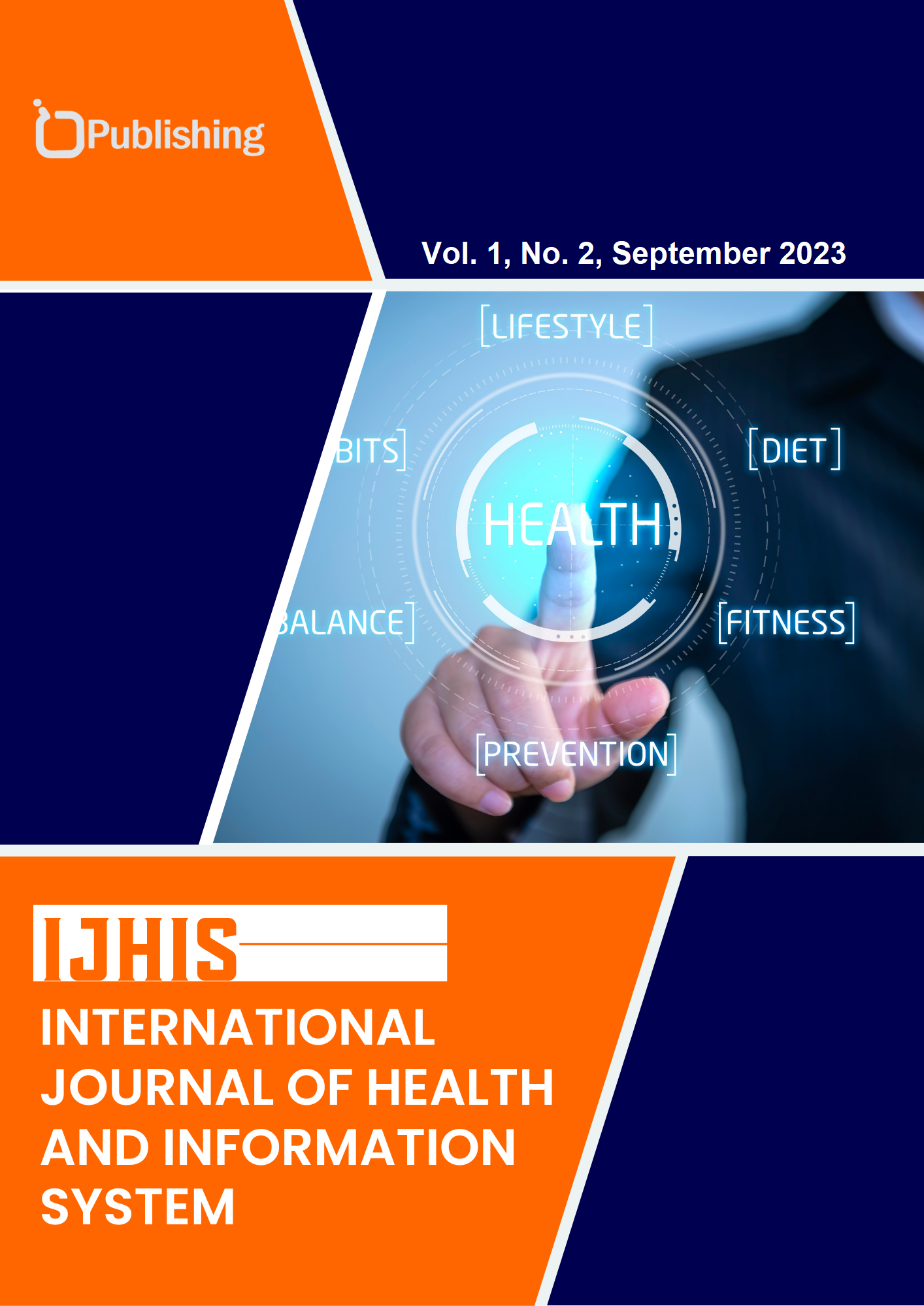Comparison of Mother’s and Toddler’s Characteristics Based On The Nutritional Status of The Toddler
DOI:
https://doi.org/10.47134/ijhis.v1i2.4Keywords:
Anaemia, Chronic energy deficiency, Complementary food, Exclusive breastfeeding, Nutritional statusAbstract
Nutritional status in toddlers is one of the indicators used to describe the quality of toddler health. Toddlers’ nutritional status is interpreted based on some indices, namely weight for age, length/height for age, and weight for length/height Z-score. The nutritional status of toddlers is affected by various factors, both maternal and child factors. Anaemia and chronic energy deficiency during pregnancy affect a toddler’s nutrition status. Birth weight, exclusive breastfeeding, and complementary food may result in a toddler’s nutrition status as well. This study aims to compare the mother’s and toddler’s characteristics based on the nutritional status of the toddler. This was an observational analytical cross-sectional study. All data for the analysis of this paper were obtained from observations of the toddlers, interviews with mothers, and recorded data from KIA book. Toddlers’ weight and length/height were measured when the subject came to Posyandu. Questions about exclusive breastfeeding and complementary food were asked of mothers. Information about anaemia and chronic energy deficiency status was obtained from KIA book. This study used chi-square test to finds evidence that, on 88 subjects, there is no difference in anaemia and chronic energy deficiency during pregnancy, birth weight, exclusive breastfeeding, and complementary food among all nutritional status indices.
References
Kossmann, J., Nestel, P., Herrera, M. G., Amin, A. El & Fawzi, W. W. Undernutrition in relation to childhood infections: a prospective study in the Sudan. Eur. J. Clin. Nutr. 54, (2000).
Olofin, I. et al. Associations of Suboptimal Growth with All-Cause and Cause-Specific Mortality in Children under Five Years: A Pooled Analysis of Ten Prospective Studies. PLoS One 8, (2013).
Williams, A. M. & Suchdev, P. S. Assessing and Improving Childhood Nutrition and Growth Globally. Pediatr. Clin. North Am. 64, 755–768 (2017).
Black, M. M. et al. Early childhood development coming of age: science through the life course. Lancet 389, P77-90 (2017).
Kementerian Kesehatan RI. PERATURAN MENTERI KESEHATAN REPUBLIK INDONESIA NOMOR 2 TAHUN 2020 TENTANG STANDAR ANTROPOMETRI ANAK DENGAN. (2020).
Lipoeto, N. I., Masrul & Nindrea, R. D. Nutritional contributors to maternal anemia in Indonesia: Chronic energy deficiency and micronutrients. Asia Pac. J. Clin. Nutr. 29, 9–17 (2020).
Scholl, T. O. & Hediger, M. L. Anemia and iron-deficiency anemia: Compilation of data on pregnancy outcome. Am. J. Clin. Nutr. 59, 492S-501S (1994).
Vasundhara, D. et al. Maternal MUAC and fetal outcome in an Indian tertiary care hospital: A prospective observational study. Matern. Child Nutr. 16, 1–8 (2020).
Zoleko-Manego, R. et al. Birth weight, growth, nutritional status and mortality of infants from Lambarene and Fougamou in Gabon in their first year of life. PLoS One 16, 1–15 (2021).
English, L. K. et al. Timing of introduction of complementary foods and beverages and growth, size, and body composition: A systematic review. Am. J. Clin. Nutr. 109, 935S-955S (2019).
World Health Organization (WHO). Standard formula for low-birth-weight infants following hospital discharge.
McLean, E., Cogswell, M., Egli, I., Wojdyla, D. & De Benoist, B. Worldwide prevalence of anaemia, WHO Vitamin and Mineral Nutrition Information System, 1993-2005. Public Health Nutr. 12, 444–454 (2009).
UNICEF & WHO. UNICEF-WHO Low birthweight estimates: Levels and trends 2000–2015. Geneva World Heal. Organ. 7, e849–e860 (2019).
Powell, K., Baic, S., Pudsey, M., Taylor, J. & Knight, A. World Health Organization (2001) The Optimal Duration of Exclusive Breastfeeding: A Systematic Review. World Heal. Organ 1–47 (2002).
World Health Organization. Complementary Feeding: Family Foods for Breastfeed Children. (2010).
Sisay, B. G., Haile, D., Hassen, H. Y. & Gebreyesus, S. H. Mid-upper arm circumference as a screening tool for identifying adolescents with thinness. Public Health Nutr. 24, 457–466 (2021).
Oh, H. K., Kang, S., Cho, S. H., Ju, Y. J. & Faye, D. Factors influencing nutritional practices among mothers in Dakar, Senegal. PLoS One 14, 1–14 (2019).
Kementerian Kesehatan RI. Laporan Akuntabilitas Kinerja Instansi Pemerintah (LAKIP) Ditjen Kesehatan Masyarakat Tahun 2020. http://www.kesmas.kemkes.go.id/assets/upload/dir_60248a365b4ce1e/files/Laporan-Kinerja-Ditjen-KesmasTahun-2017_edit-29-jan-18_1025.pdf (2021).
Allen, L. H. Biological mechanisms that might underlie iron’s effects on fetal growth and preterm birth. J. Nutr. 131, 581S-589S (2001).
JALEEL, R. & KHAN, A. Severe anemia and adverse pregnancy outcome. J. Surg. Pakistan 13, 147–150 (2008).
Kurpad, A., Muthayya, S. & Vaz, M. Consequences of inadequate food energy and negative energy balance in humans. Public Health Nutr. 8, 1053–1076 (2005).
Neufeld, L. M., Beal, T., Larson, L. M. & Cattaneo, F. D. Global Landscape of Malnutrition in Infants and Young Children. in Global Landscape of Nutrition Challenges in Infants and Children (S.Karger AG, 2020).
Semba, R. D. The rise and fall of protein malnutrition in global health. Ann. Nutr. Metab. 69, 79–88 (2016).
Downloads
Published
How to Cite
Issue
Section
License
Copyright (c) 2023 Puspito Arum, Ida Nurmawati, Niyalatul Muna, Indah Muflihatin, Demiawan Rahmatta Putro Mudiono, Andri Permana Wicaksono

This work is licensed under a Creative Commons Attribution-ShareAlike 4.0 International License.







